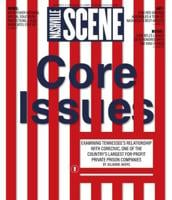Hank Garland wasn't as famous as Chet Atkins, whose greatest impact at any rate came as an A&R man, and Garland's tenure among Nashville's A-Team didn't last nearly long as that of his only studio equal, Grady Martin. Even so, Hank Garland was as important as any guitar player in the history of recorded country music. When he died after a long illness on Dec. 27 at the age of 74, Garland hadn't recorded since a 1961 car accident greatly impaired his motor skills. Yet the hummable, instantly identifiable, all-over-the-map music that Garland made—he played that threatening rock 'n' roll lick on Elvis Presley's "Little Sister," those woebegone fills on Webb Pierce's "Wondering" and the tumbling intro to Patsy Cline's "I Fall to Pieces"—seems likely to be remembered for another 40 years and then some.
Garland grew up in South Carolina, where he dissected the records of Mother Maybelle Carter and Arthur "Guitar Boogie" Smith. In 1946, when he was just 16, he landed a featured spot in Opry star Paul Howard's band. In Nashville for good, Hank quickly gained a reputation as a hotshot hired gun, and soon he began touring with Eddy Arnold and Cowboy Copas.
Garland was always playing his guitar. If he wasn't woodshedding with his favorite Charlie Christian and Django Reinhardt records, joining in all-night jam sessions with fellow jazz hounds like drummer Buddy Harman and saxophonist Boots Randolph, or hanging out in Nashville's R&B clubs, he was in a recording studio. He occasionally cut his own records, including a couple of jazz LPs, but he worked mostly in the role of a supporting musician. Until the accident forced him into early retirement, Garland was among the most sought-after guitarists in Music City, contributing to Nashville Sound-era hits by everyone from Arnold, Jim Reeves and Lefty Frizzell to Don Gibson, Roy Orbison and the Everly Brothers, among countless others.
Garland earned himself a nickname with "Sugarfoot Rag," a guitar workout that sits in the country-picking pantheon alongside Mother Maybelle's "Wildwood Flower." His solo version went nowhere, but when A&R man Paul Cohen had words added to Garland's instrumental, gave it to Red Foley to sing, and placed it on the flipside of "Chattanoogie Shoe Shine Boy," it became a country crossover hit. Ostensibly, Foley's cutting a rug on the record because he's won big at the track, but the words hardly matter with Garland's rapid-fire electric guitar laying down big, twangy licks. "Dig a little jig, then a zig and a zag," Foley sings, and the zag and the zig that Foley and everyone else were digging belonged to none other than Hank Garland.
—David Cantwell




